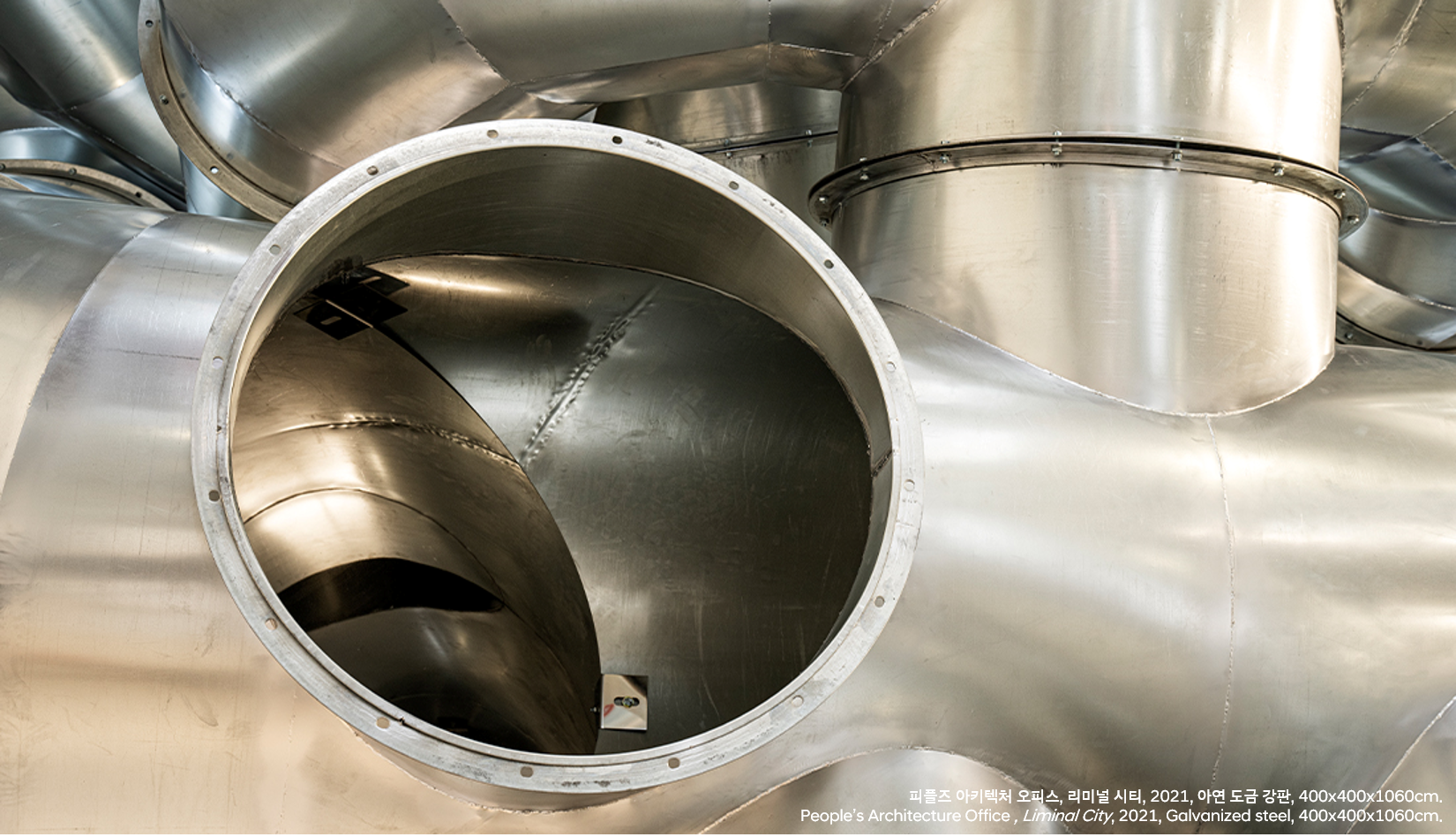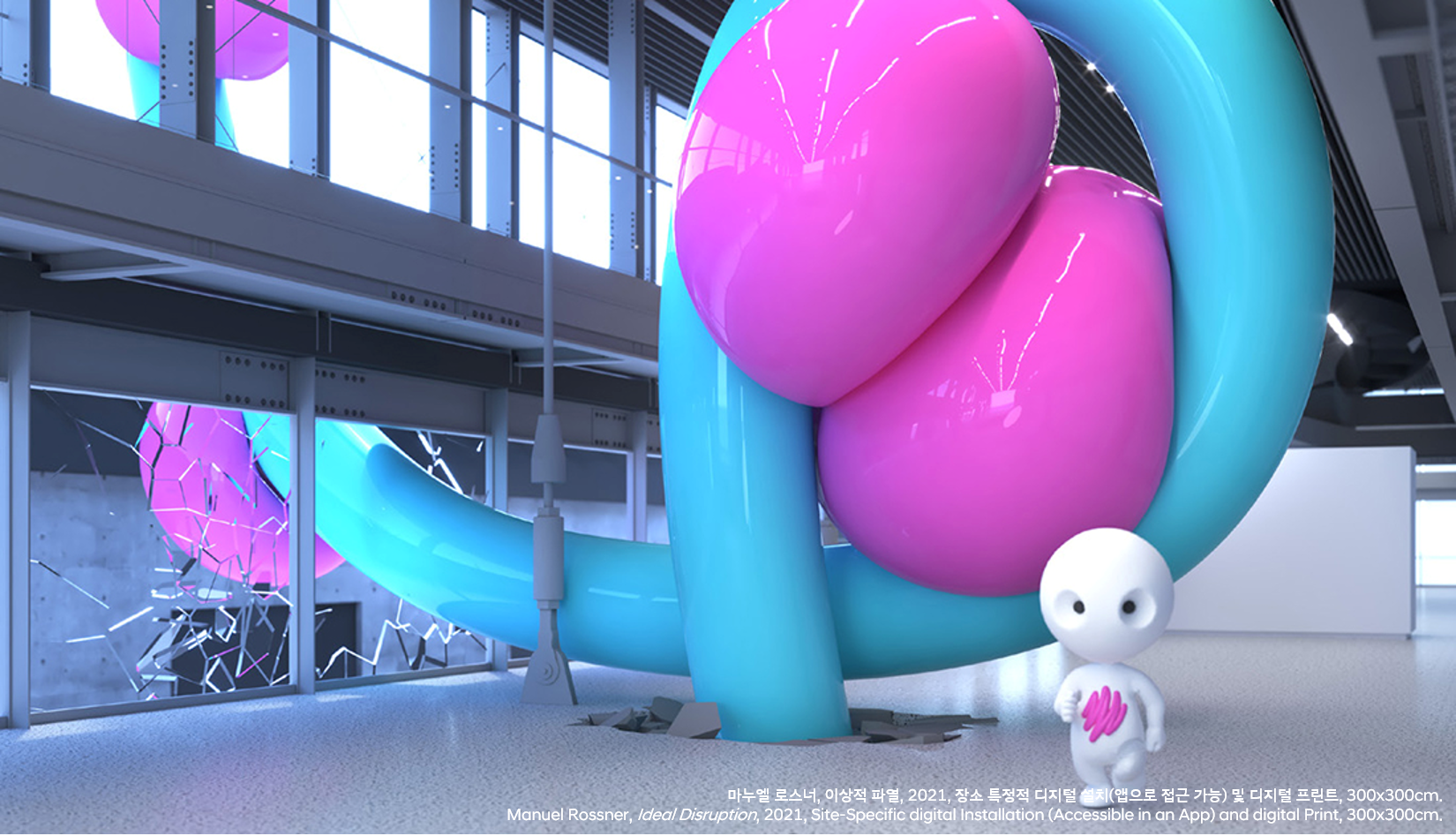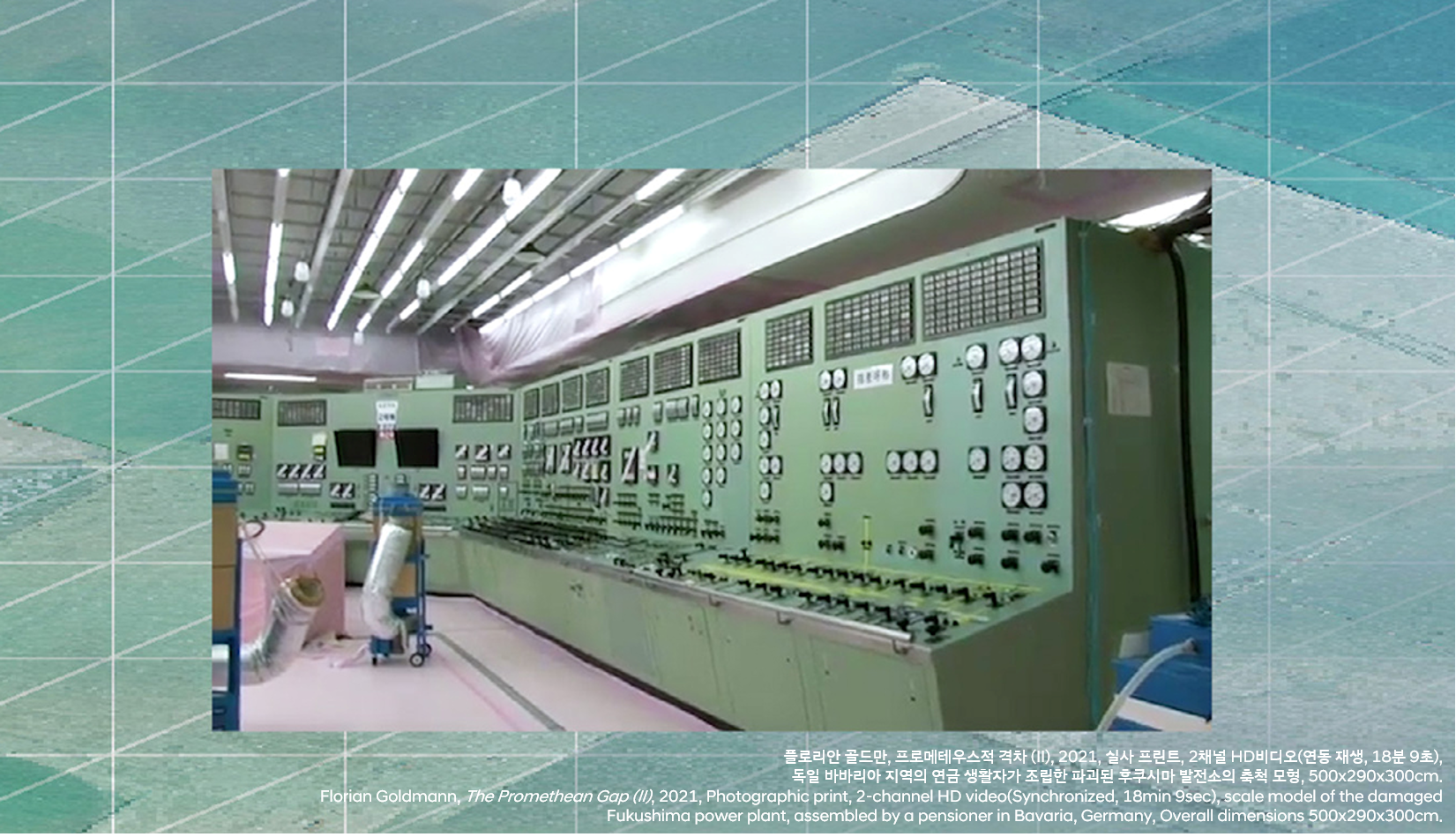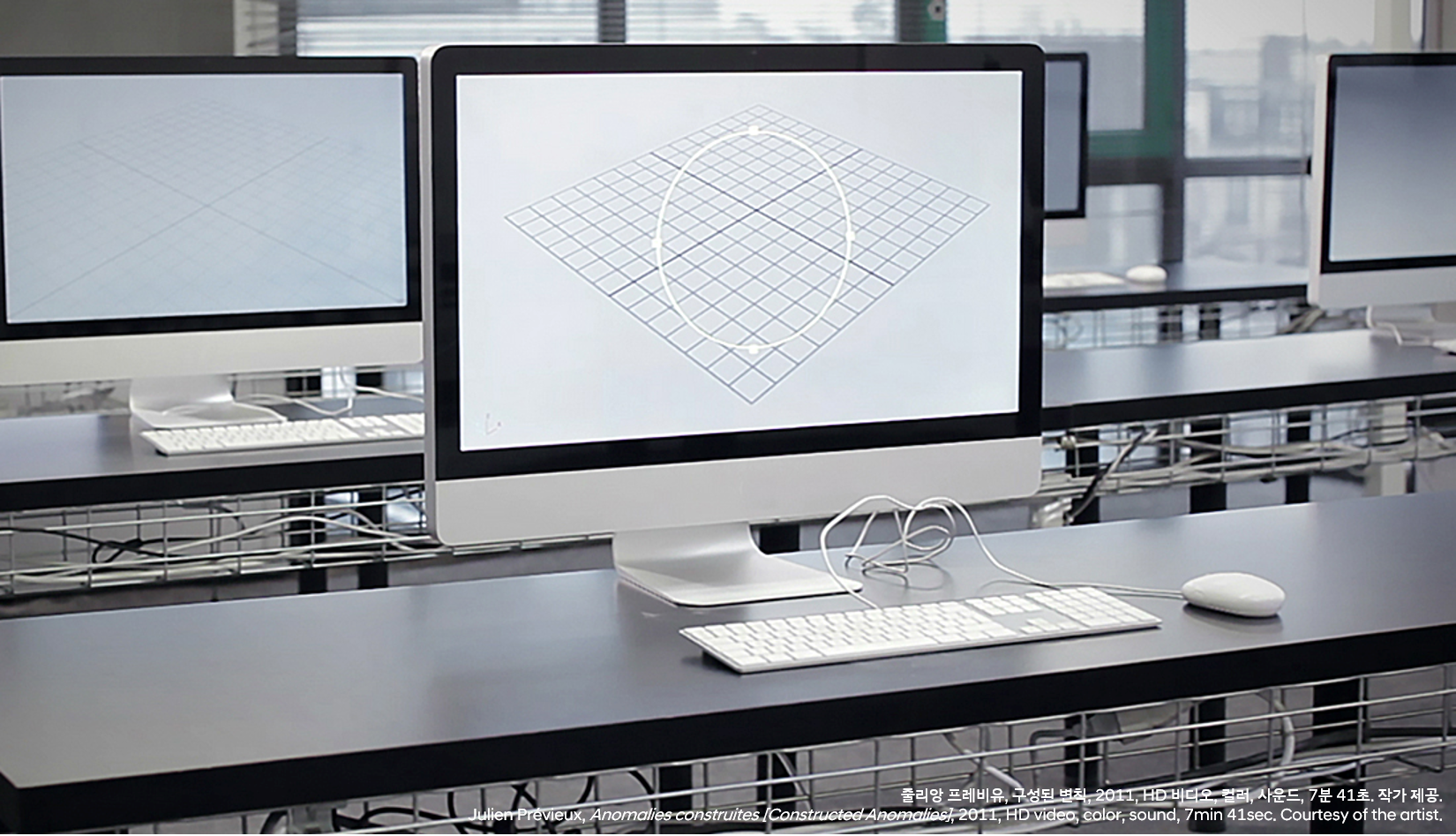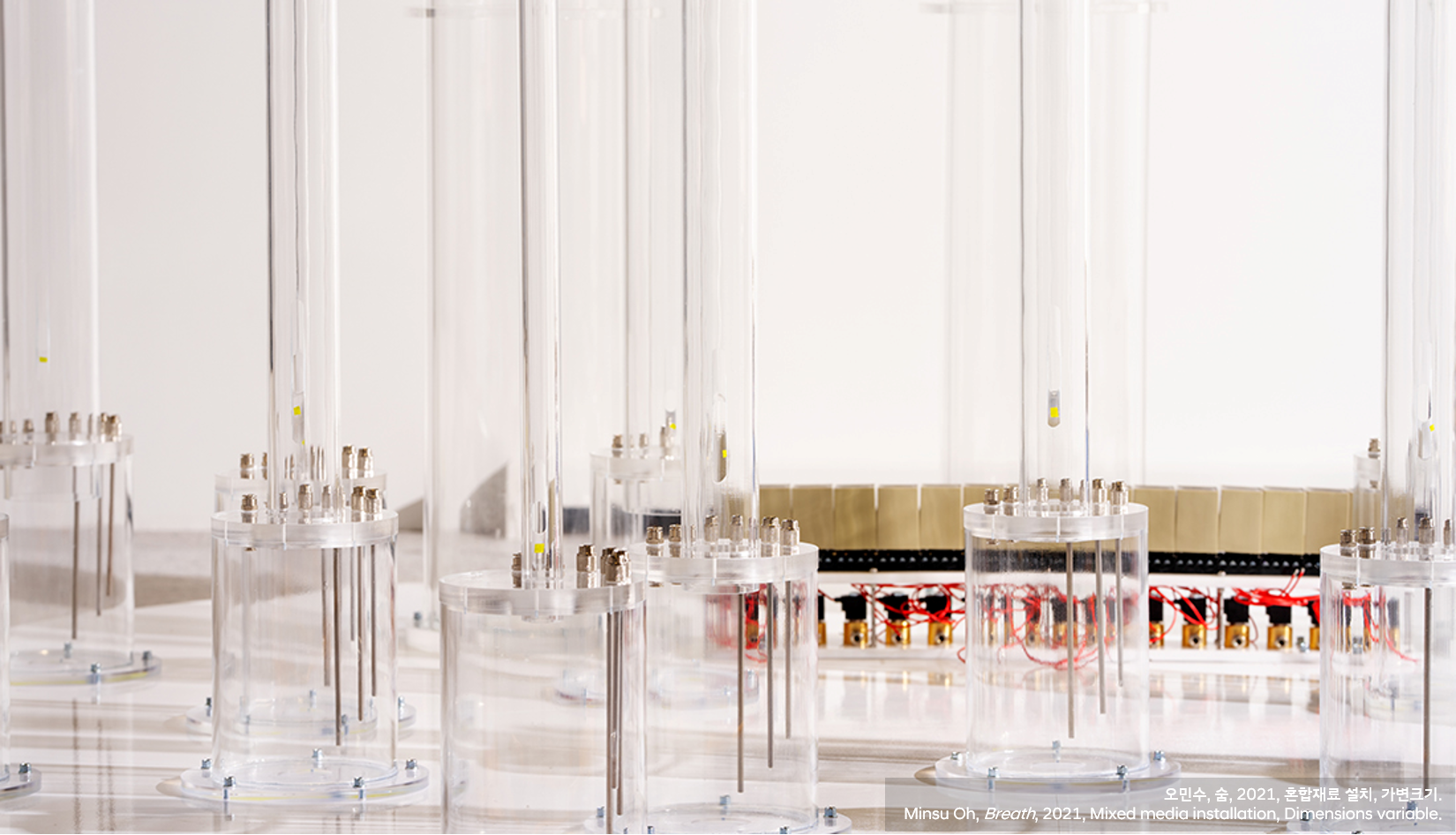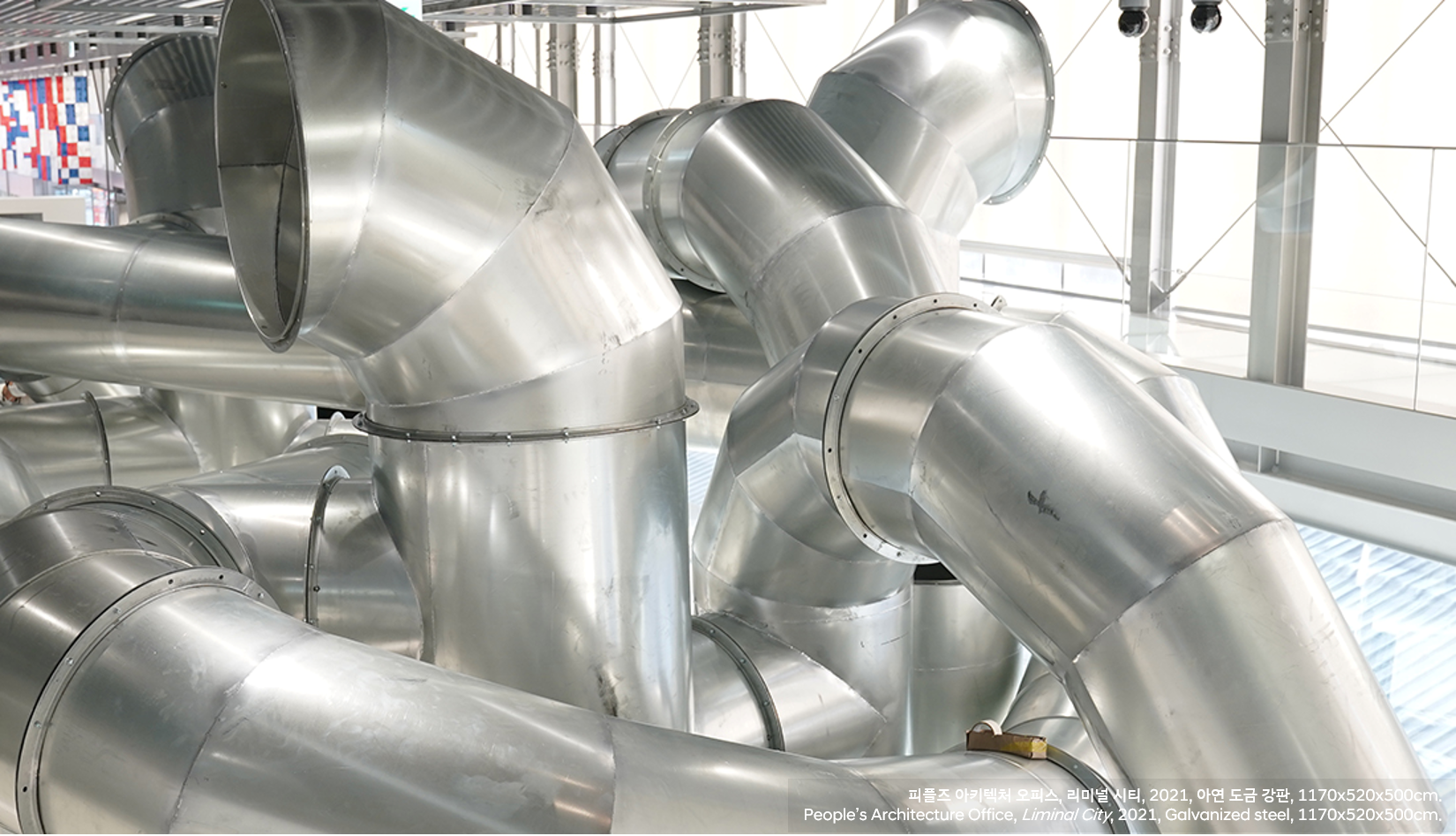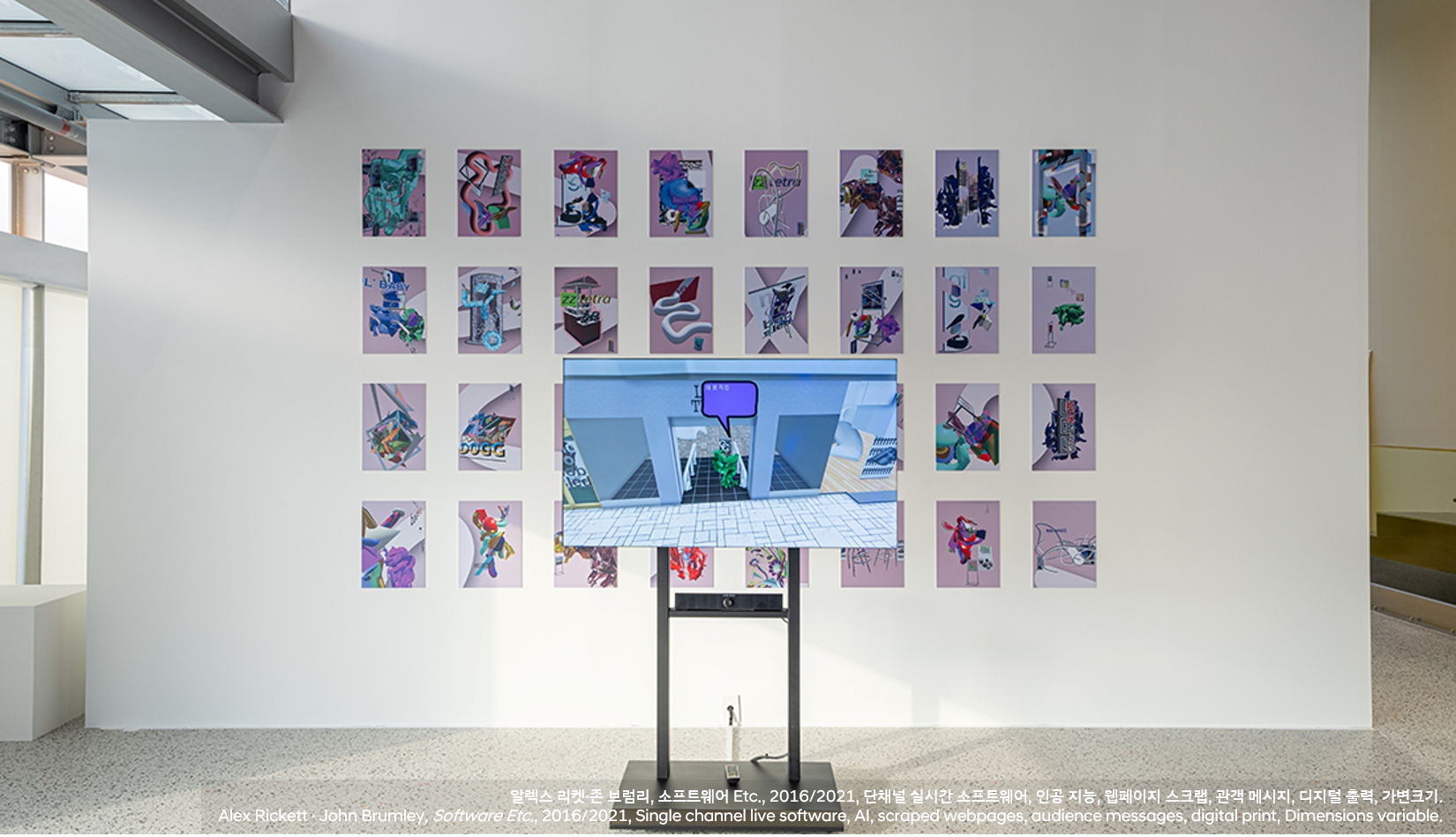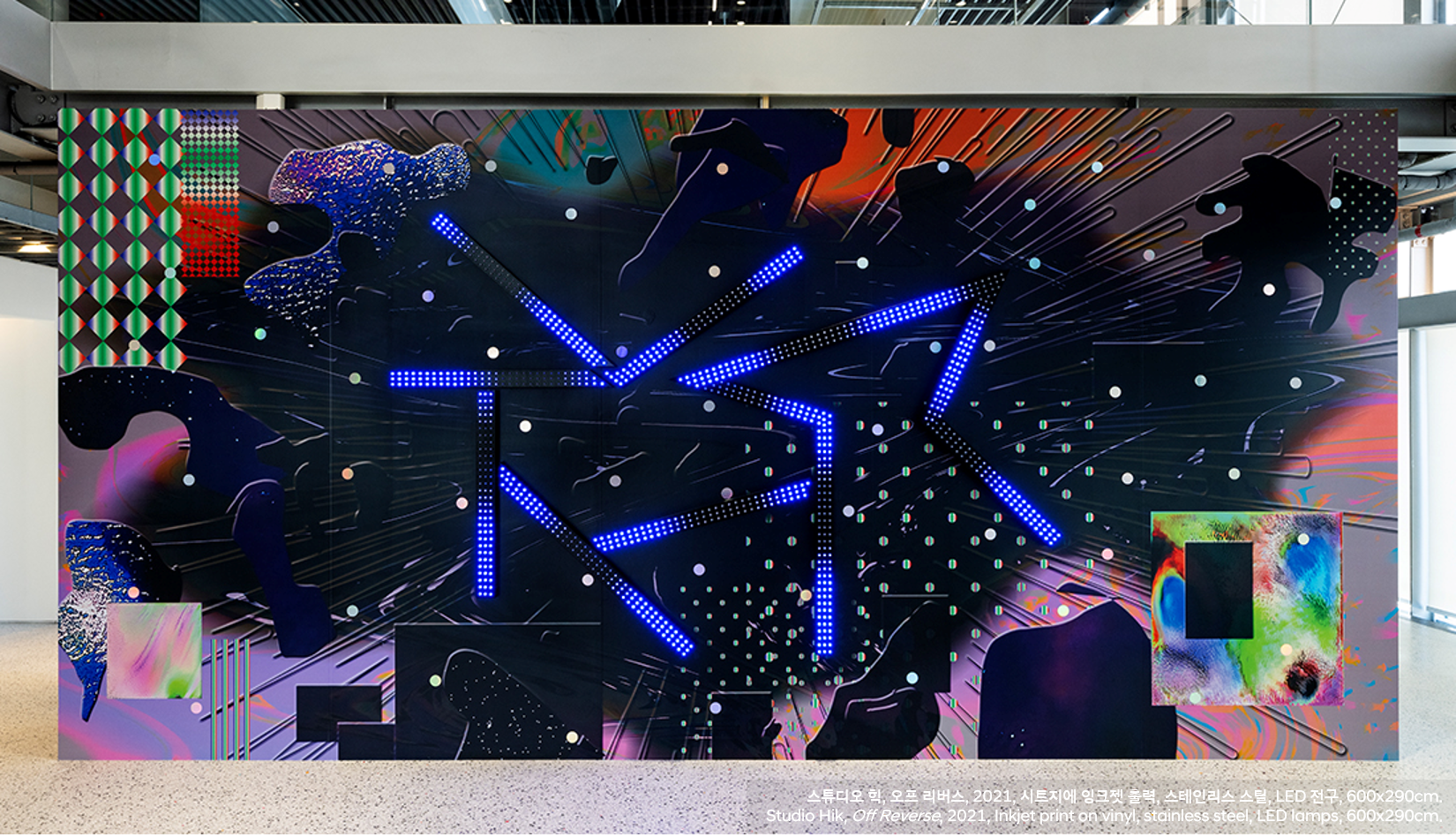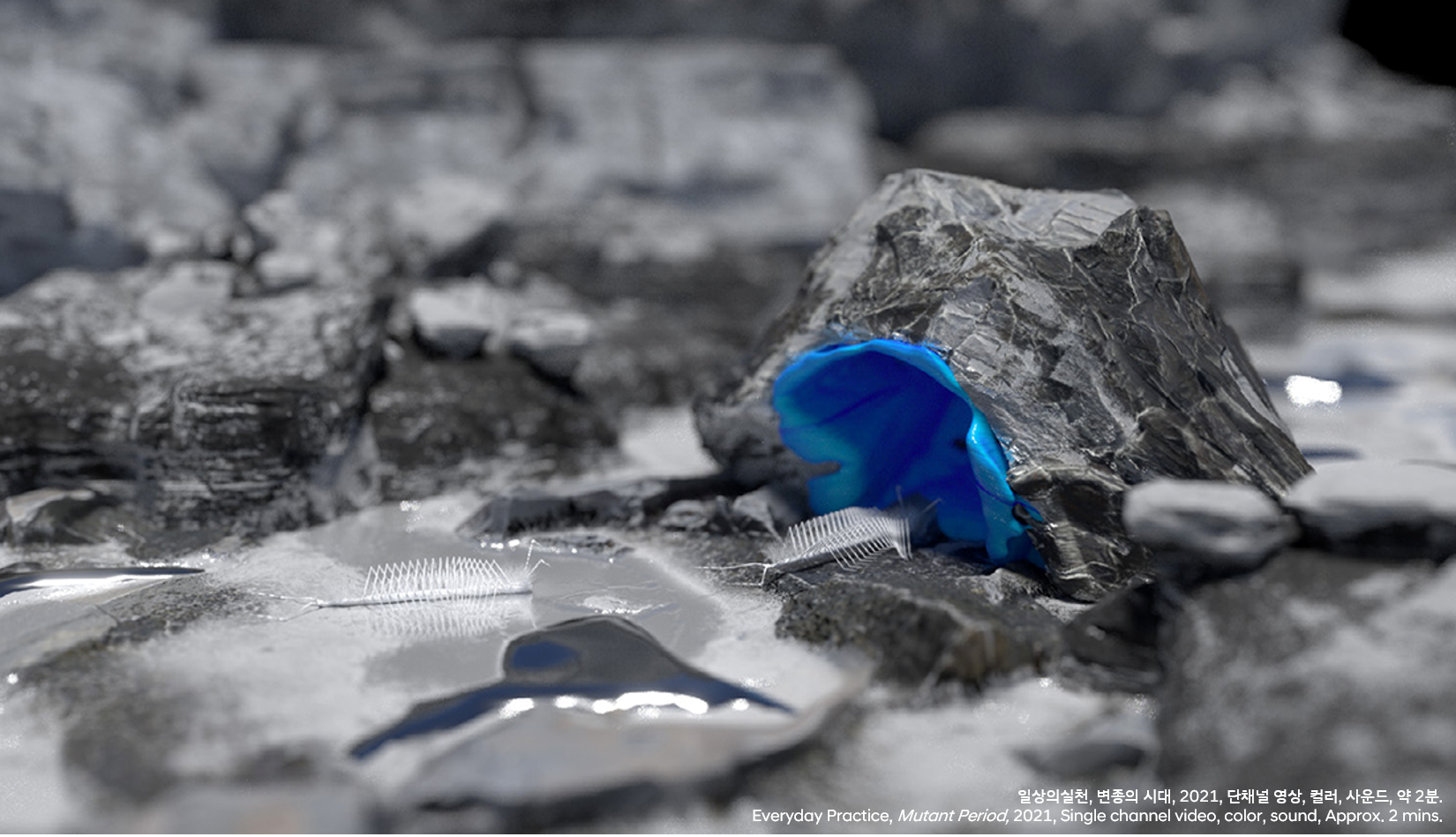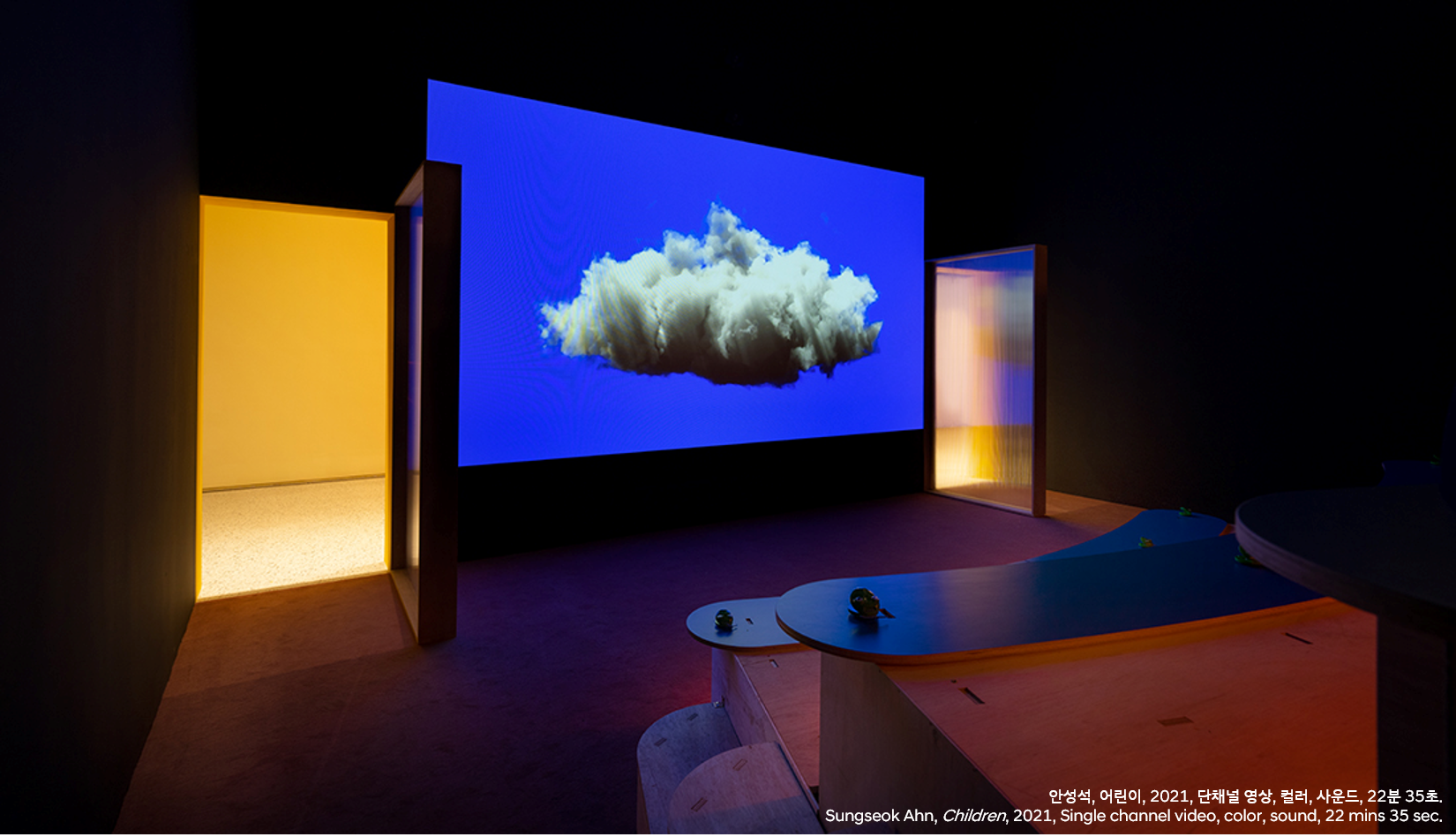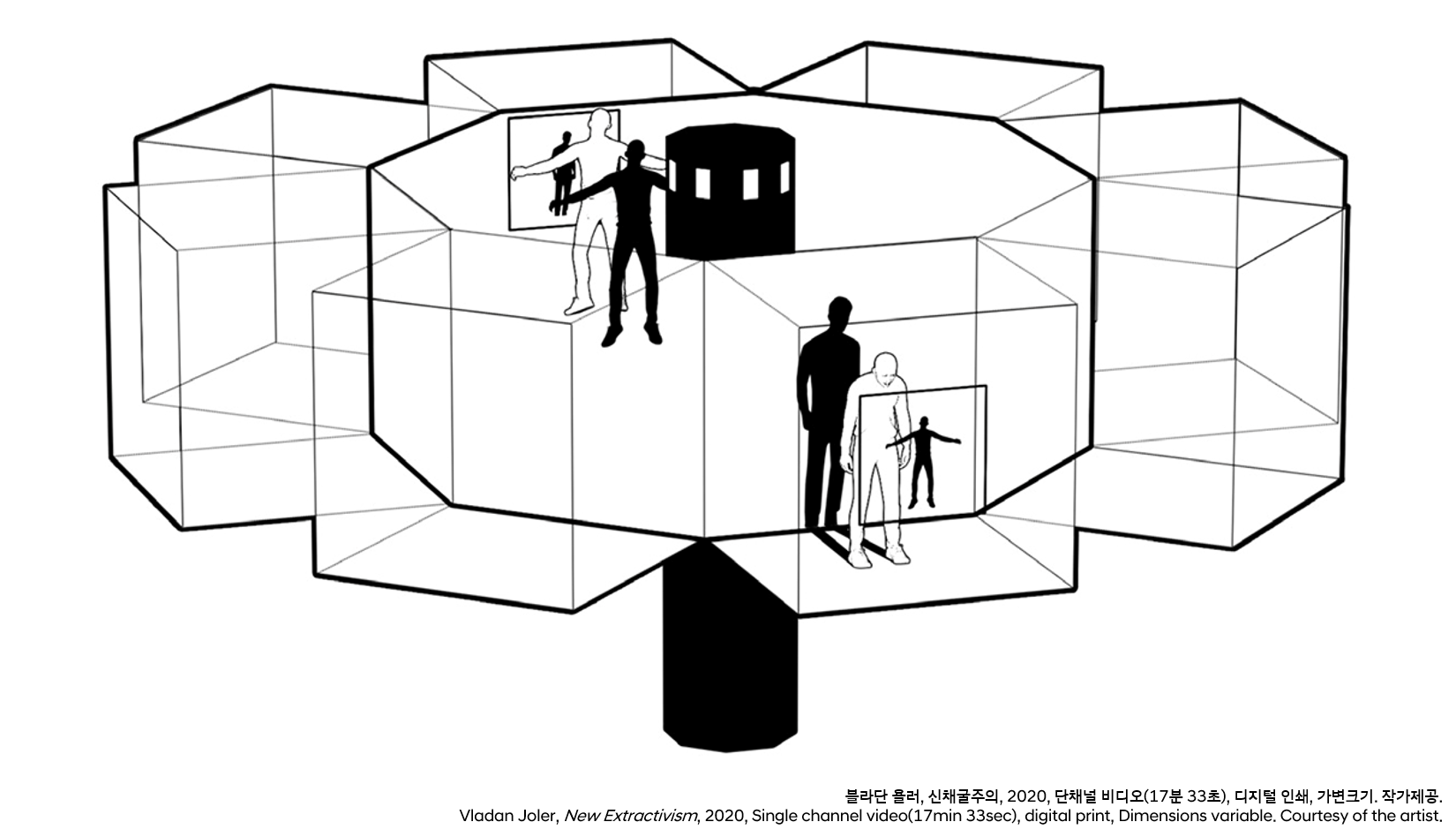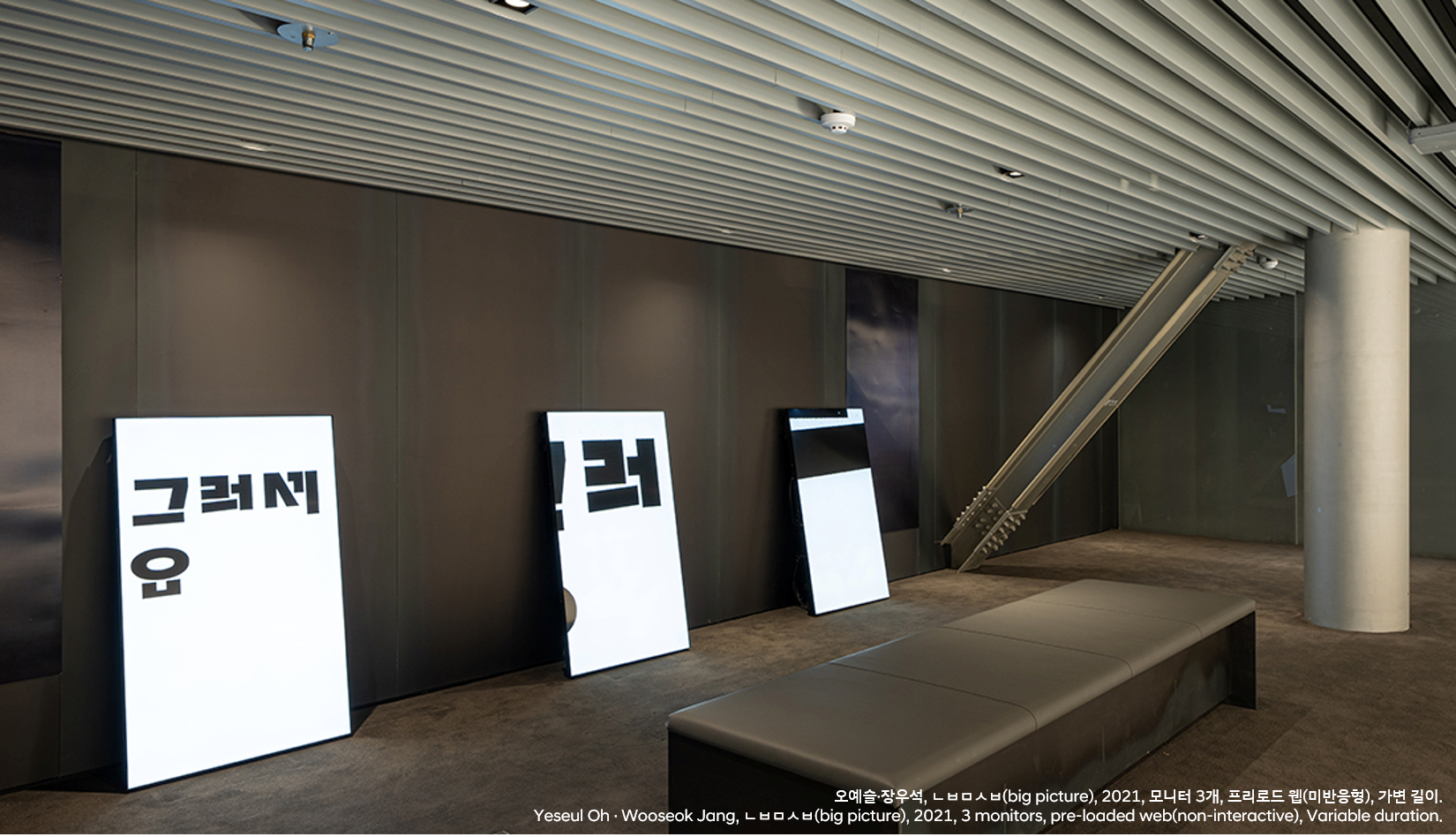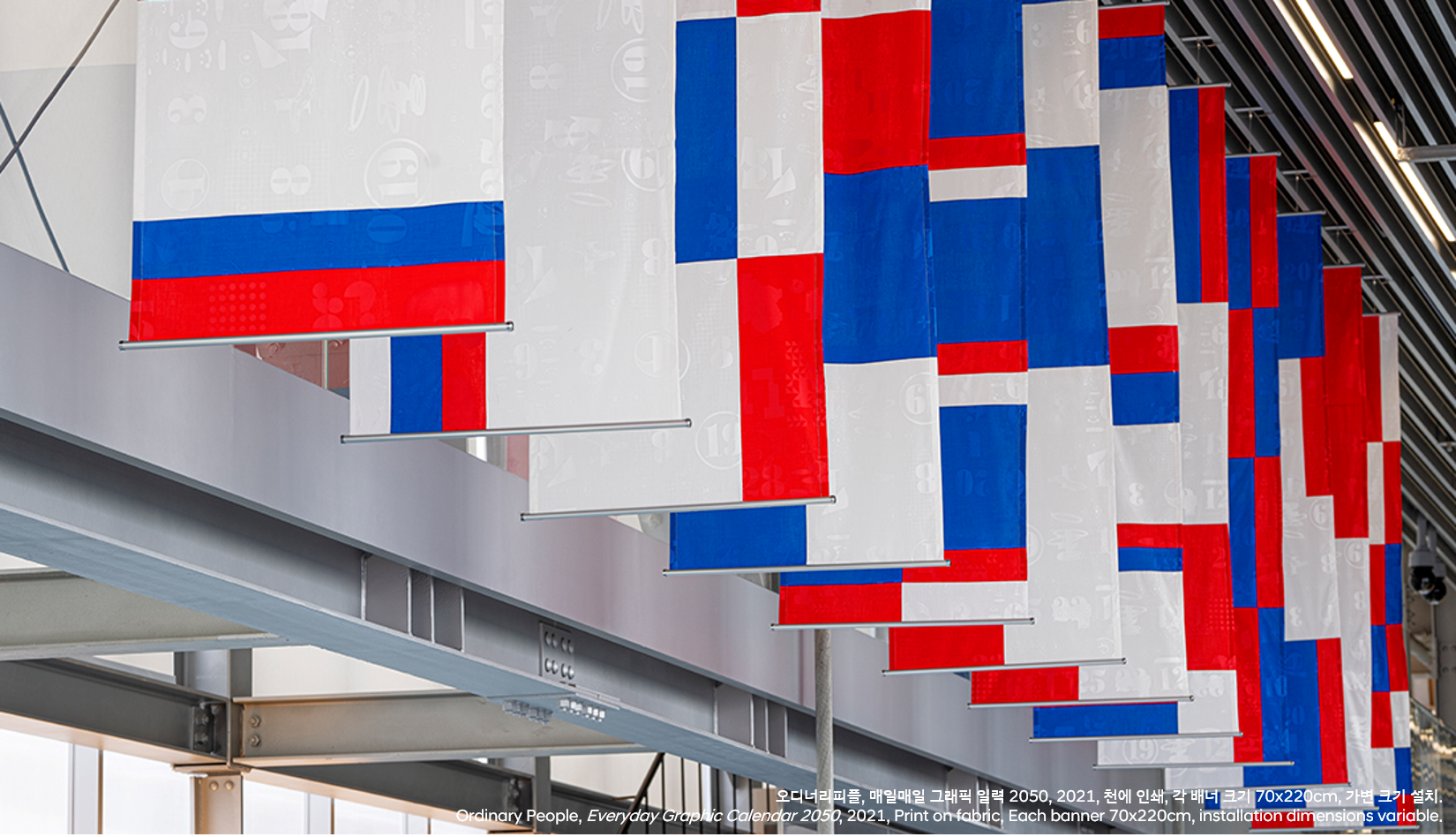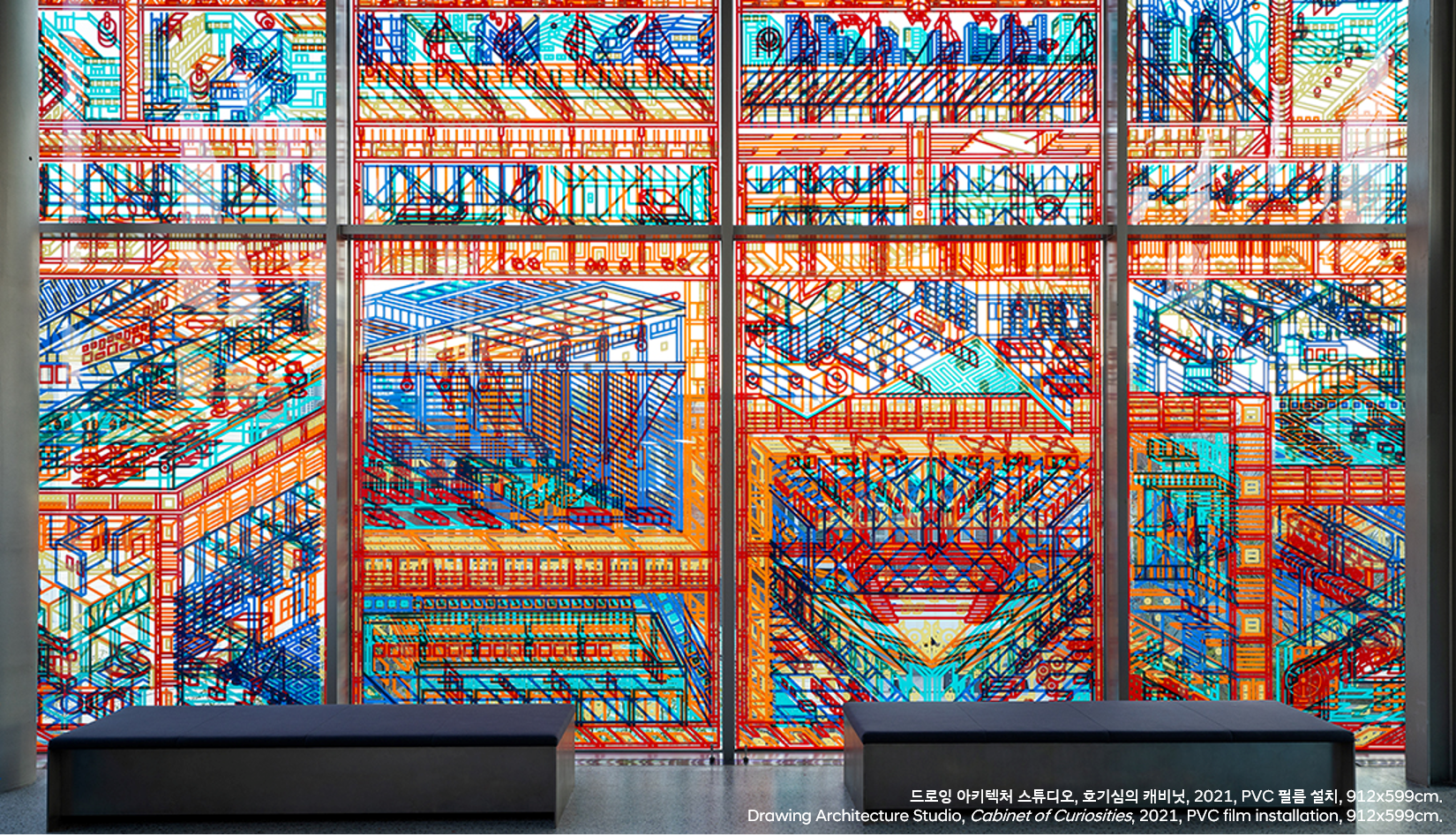Hyundai Blue PrizeDesign 2021
Value of Time
With civilization’s technological advancement throughout history, humanity has witnessed not only the reduction of time spent in transportation, but also the impact of internet and communications technologies which have enabled efficient learning and processing of information and tasks in our daily lives. The dramatic increase in efficiency across all areas has significantly curbed time spent on work, encouraging individuals to explore other valuable and personal pursuits in their lives.
There exist many different ideas about the value of time. We can reflect on the meaning of time from diverse perspectives on life: traditions and memories built upon the past; the dynamics of evolving time that create something new; the grand cycle of the four seasons and our lives.
Today, amid the pandemic, we face time in a completely unprecedented environment. Here, we aspire to look into the “value of time” with a contemporary perspective and enrich the dialogue on our way of life as it continues, moment by moment, to evolve.
Winner

Somi Sim
It has become increasingly difficult to imagine the future. In 1977, when the Sex Pistols chanted “No future for you,” they manifested the rage of youth at a society without alternatives; punk music provided a united culture of resistance. The doom of late capitalism loomed over the culture, and the anticipation of utopia turned into a realistic despair. Since then, the bitter “no future” narrative has been played back again and again in music, films, novels, art, and digital pop culture. Today, the fragmented and unstable operation of time is an axis of contemporary culture, a thing of independent memetic existence.
The global COVID-19 pandemic has, since its outbreak in early 2020, heightened our anxieties around the temporal. The unprecedented society-wide crisis suspended and delayed our individual and collective senses of time, while amplifying our uncertainties about the future. The sudden outbreak of a virus, however, isn’t the only cause of the threat we feel, the fear of what is to come. The prospect of the future has long been precarious amid the worsening crises of global warming, increasing inequality, job instability, housing shortages, and resource depletion. Future studies scholars today predict that by 2050 the number of refugees from the climate crisis will have increased to 200 million and that our lives will have grown significantly more precarious. Nonetheless, these dystopian predictions are not entirely bleak; these realizations urge us to act, to face the issues at hand, and open spaces for possibility of alternative scenarios, for practices that shape the future.
This exhibition was designed to retrospect those futures lost in the wake of contemporary societies’ waning optimism and increasing anxiety. As novelist William Gibson writes, “Every future is someone else’ s past, every present is someone else’s future”: the futures we envision are prophetically tied to how we, and our communities, have experienced the past and perceive the present. The title of the exhibition, Do You Miss the Future?, is borrowed from that of a 2014 interview with Mark Fisher, wherein he shares his concerns over cultural regression and the loss of an idea of future time. Following this lead, the exhibition creates a space for the audience to reconstruct the operations of time, reflecting the prevailing anxieties of the present, the misalignment of space and time, and our repeated regressions to failed futures. Through the works of designers, architects, visual artists, and researchers, who collectively examine and reflect on the issues of cities, industries, labor, automation, technology, disasters, hyperobjects, and the near future, the exhibition confronts the operations of an uncertain time, introducing the possibility that we might design things differently.
Jury Review
Finalists
-
Somi Sim
-
Juli Yoon
-
Pooroni Rhee
-
Jiu Jang, Daniel Kapelian
-
Juri Cho
Juries
-
Nicolas Le Moigne
-
Mateo Kries
-
Kyungsun Kymn
-
SungWon Kim
-
Bora Hong
Symposium
The Symposium is part of the Hyundai Blue Prize Design program,
where renowned speakers from domestic and overseas and award shortlist communicate on various topics regarding design and curating.
Prior to joining the Seoul National University of Science & Technology, Kim served as curator of the Hangaram Design Museum. He has curated several exhibitions on historical and contemporary design, including New Vision from Laszlo Moholy-Nagy(Seoul Arts Center, 2005), Reset: Korean New Wave Design (ARCO, Madrid, 2007), and Futures of the Past(Gwang-ju Design Biennale, 2017). He also contributed to &Fork(Phaidon, 2007) and Encyclopedia of East Asian Design(Bloomsbury, 2019).
Jooyoung Sohn
What is Design Curating?
After graduating from the Department of Industrial Design at the Korea Advanced Institute of Science and Technology (KAIST), Jooyoung Sohn gained practical experience in design projects in companies, and then performed design research and planning at the Korea Design Industry Research Center (KDRI). She was selected as a Chevening Scholar by the British Ministry of Foreign Affairs, and obtained a Master`s degree in Design History and a Ph.D. in Museum Studies from Kingston University in London. As a curator, she was awarded a Korea’s next generation design leader, selected by the Ministry of Trade, Industry and Energy and the Korea Institute of Design Promotion.
Since 2012, she has been appointed as a senior curator of the Ministry of Culture, Sports and Tourism and is currently working at the National Museum of Modern and Contemporary Art, Korea. She is interested in the convergence of design, art, industry, technology, and artificial intelligence by experimenting with the expandability of curation through various fields.
of the World Today
Aric Chen
Curator’s Response to the Complexity
of the World Today
Aric Chen is an independent curator and writer based in Shanghai, where he is Professor and founding Director of the Curatorial Lab at the College of Design & Innovation at Tongji University. In addition, he currently serves as Curatorial Director for the Design Miami fairs in Basel and Miami Beach. From 2012-2019, Chen was the first Lead Curator for Design and Architecture, and later Curator-at-Large, at M+, the new museum for visual culture opening next year in Hong Kong`s West Kowloon Cultural District.
Prior to M+, Chen was Creative Director of Beijing Design Week. Over the years, he has organized dozens of projects and exhibitions internationally, in addition to serving on numerous juries, and has been a curatorial advisor to the London Design Biennial, Cooper-Hewitt Design Triennial (New York), and Gwangju Design Biennale.
Marina Otero Verzier
Time x Design
Marina Otero Verzier is an architect based in Rotterdam. She is Head of the Social Design Masters at Design Academy Eindhoven, and Director of Research at Het Nieuwe Instituut (HNI), the Dutch institute for Architecture, Design and Digital Culture. At HNI she leads initiatives such as “Automated Landscapes”, focusing on the emerging architectures of automated labour, and “BURN-OUT: Exhaustion on a planetary scale”, instigating forms of care for multispecies, collective bodies. Previously, she was the curator of “Work, Body, Leisure,” the Dutch Pavilion at the 16th Venice Architecture Biennale (2018), Chief Curator of the 2016 Oslo Architecture Triennale together with the After Belonging Agency, and the director of Global Network Programming at Studio-X- Columbia University GSAPP (New York).
Mentoring Review
Do You Miss the Future? 2021.12.09 - 2022.03.31
Exhibition Introduction
The theme of this year’s Hyundai Blue Prize Design is ‘Value of Time.’ Curated by the award winner Somi Sim, the exhibition explores how to imagine a future 30 years from now where it is becoming increasingly difficult to imagine the future. The exhibition title, “Do You Miss the Future?” is borrowed from the title of a 2014 interview with cultural critic Mark Fisher. He shares his concerns over cultural regression and the loss of an idea of future time. Through the perspectives of designers, visual artists, and researchers, this exhibition searches for the lost time of the future belonging to a human race living in the widespread anxiety of the present. Participating artists working in various fields ? architecture, graphic design, art, technology research, film, 3D animation, games, and virtual reality ? guides us to ‘the direction in which the world is designed’ and to ‘pathways through which humans and society are designed.’ The exhibition allows us to listen to the various dialogues generated at the intersection of design and the world and imagine our visions for the future across the realms of urban culture, industry, and art. Based on the brand vision of ‘Progress for Humanity,’ Hyundai Motor Company has been striving to provide ‘Quality Time’ that makes every moment truly worthwhile. In this context, this exhibition aims to convey the value of time by depicting the future we have lost through various design imaginations. We hope that all visitors will meet the future reinterpreted in the language of design closely interrelated to everyday human life, and shape their future with greater value.
Do You Miss the Future? 2021.12.09 - 2022.03.31
Part 1. POST CITY
The first section, ‘Post City,’ covers the present and future of those urban spaces designed to withstand disasters. People’s Architecture Office’s pipe structure mediates the boundaries between city and architecture, industry and design; Re-tracing Buro probes into a transitional urban space in the post-COVID-19 era; Manuel Rossner expands the architectural space of Hyundai Motorstudio Busan into the digital; Florian Goldmann explores city modeling and simulations for disaster preparedness. As a whole, the first section directs us to a newly envisioned place that emerges from the crises of urban space and the misalignment of the temporal and the spatial.
[Artists]
People’s Architecture Office, Re-tracing Buro, Manuel Rossner, Florian Goldmann
Do You Miss the Future? 2021.12.09 - 2022.03.31
Part 2. GHOST WORK & THE HUMAN
How are we being designed when our reorganization by technology goes beyond the modes of production to extend its grip to the individual? With this question in mind, the second section, ‘Ghost work & the Human,’ explores alternative ways to restore the relationship between technology, labor, and the human. Julien Prévieux examines the relationship between today’s increasingly datafied world and immaterial labor; Minsu Oh, inspired by the pressure contained and the fumes emitted by the steam engines that drove industrialization, delves into the unfolding of industry and the consequent design of humans. Additionally, People’s Architecture Office’s tube installation reappears in this section as a monumental architectural structure, presenting an architectural practice that connects humans to industries and individuals to communities.
[Artists]
Julien Prévieux, Minsu Oh, People’s Architecture Office
Do You Miss the Future? 2021.12.09 - 2022.03.31
Part 3. HYPER OBJECT
The third section deals with the emergence of the ‘Hyper Object,’ and the consequent breakdown of the boundaries between object and subject, life and matter, human and non-human. Crises that go beyond human control-pandemics, climate crises, and drastic changes in the ecosystem-demand that we practice alternative thinking and forge symbioses that go beyond an anthropocentric worldview. Towards this attempt, Alex Rickett and John Brumley construct a digital game that is both a virtual shopping mall and a chatbot ecosystem of unknown beings, while Studio Hik explores the visual possibilities of the future in the graphic design world and imagines a topography of the transformed object-subject relationship in a hyper-connected society. Everyday Practice project a panoramic landscape on the ‘Creative Wall’ of the exterior of the building, telling the story of the emergence of a new species that transforms, combines, and expands: a transhumanist picture of the world.
[Artists]
Alex Rickett · John Brumley, Studio Hik, Everyday Practice
Do You Miss the Future? 2021.12.09 - 2022.03.31
Part 4. 2050
The last part of the exhibition, ‘2050,’ tells the story of the near future, guiding the audience to a future that is near yet not easily imaginable. On this theme, Sungseok Ahn depicts children as future humans arriving into the present moment, while Vladan Joler critically examines the new rules, designs, cultures, and humans of the future through the position of a digital colonialism. Yeseul Oh and Wooseok Jang approach the future of typography, speaking to the overflow of virtual communication; Ordinary People excavates the lost range of time from the graphic elements of a vanishing calendar. These artists invite us to concretely redesign a scenario of the uncertain future. In addition to these works, Drawing Architecture Studio’s future industrial city, installed on the large window of Hyundai Motorstudio Busan, overlays the real present-day cityscape of Busan, artfully suggesting a city of vision and interconnectivity.
[Artists]
Sungseok Ahn, Vladan Joler, Yeseul Oh · Wooseok Jang
Ordinary People, Drawing Architecture Studio
Do You Miss The Future? Artists
[People’s Architecture Office]
People’s Architecture Office is an architecture studio founded in 2010 by James Shen, He Zhe, and Zang Feng with its offices in Beijing, Shenzhen, and Boston. It was named one of the world’s best architecture firms in 2019 by Domus, and as one of the world’s ten most innovative architecture companies in 2018 by Fast Company. It has been exhibited at the Venice Architecture Biennale, Harvard Graduate School of Design, and the London Design Museum.
[Re-tracing Buro]
Re-tracing Buro is an urban research collective, formed by independent curator, Somi Sim and artist, Julien Coignet. Created in 2017 as a collective for a project at THAV in Taipei, the collective has since co-curated many exhibitions, including Order/Disorder(2017) and Against Architecture(2018) based in Seoul and Paris. They have also participated in the 2020 Busan Biennale’s ‘Talk Program’.
[Manuel Rossner]
Based in Berlin, Manuel Rossner designs digital spaces and virtual worlds in which he examines the effects of technological developments on society and art. He has presented his works at Berlin, Augmented Berlin together with Highsnobiety(2021). He has also had solo exhibitions at Konig Galerie Berlin(2020) and Leipzig Museum of Fine Arts(2019).
[Florian Goldmann]
Florian Goldmann works in the fields of visual arts, artistic research, and media theory. His research has largely been concerned with how historical as well as future events of catastrophe are visualized and imparted, commemorated, and predicted, with a particular focus on the role that models and modeling processes play. He participated in the Venice Architecture Biennale, Moscow International Biennale for Young Art, and Nakanojo Biennale.
[Julien Prévieux]
Julien Prévieux is a French visual artist, theater director, and professor at the National School of Fine Arts, Paris. His works deal with the issues of work, management, economics, politics, control systems, state-of-the-art technologies, and the culture industry. He has had solo exhibitions at Art Sonje Center, Marseille Museum of Contemporary Art, Centre Pompidou, and received the Prix Marcel Duchamp in 2014.
[Minsu Oh]
Minsu Oh’s works focus on the heavy labor, forgotten senses, and hidden places behind the high-tech glare of today’s world. He has exhibited his works at Jeon Taeil Memorial Hall(2021), Naming the Nameless(Seoul Museum of Art Bunker, 2021), and Diplopia(Arko Art Center, 2020).
[Studio Hik]
Studio Hik is a graphic design studio run by Heesun Seo and is based in Seoul and Hong Kong. The studio specializes in designs within the fields of art and culture. Studio Hik has presented their works at Helsinki Biennial(2021), Nonobjective Paranoia(All Time Space, 2018), W show(SeMA Storage, 2017), and Typojanchi(2017).
[Alex Rickett, John Brumley]
Alex Rickett and John Brumley are artists and researchers who work in the media of code, games, installation, and software to construct alternative networked communities and excavate vanishing digital culture. The both received their MFAs in Media Arts from UCLA and have exhibited their works at the Hammer Museum, Ars Electronica, as well as many artist-run and independently organized spaces.
[Everyday Practice]
Everyday Practice is a graphic studio founded by Joonho Kwon, Kyung-chul Kim, and Eojin Kim. While examining the role of design in today’s world, the studio seeks to explore different approaches beyond the planar surface. Their recent exhibitions include ONOOOFF(Busan Museum of Art, 2021) and Korea: Cubically Imagined(UNESCO HQ, 2021).
[Sungseok Ahn]
Sungseok Ahn investigates his generation, times, states, and systems by exploring where historical records and personal experiences intersect. He has exhibited his works at the National Museum of Modern and Contemporary Art Korea, Seoul Museum of Art, and Hiroshima City Museum of Contemporary Art. He has also had solo exhibitions at BMW Photo Space(2021) and One and J+1 (2018).
[Yeseul Oh, Wooseok Jang]
Yeseul Oh, a front-end engineer, and Wooseok Jang, a graphic and type designer, have been collaborating since 2013 in various projects, most of them web-based. Recently, they are actively seeking to take more projects together with each other’s interests and abilities as their driving force.
[Vladan Joler]
Vladan Joler is the co-founder of SHARE foundation and a professor at the Academy of Arts in Novi Sad, Serbia. He uses multidisciplinary approaches to explore and visualize technological and social phenomena such as algorithmic transparency, digital labor exploitation, and invisible infrastructures. His works have been acquired by the Museum of Modern Art in New York, the Design Museum in London, and many others.
[Ordinary People]
Ordinary People is a multidisciplinary design studio specializing in brand strategy and art direction. Founded in 2006, it works in multiple media in both cultural and commercial realms. Its works explore a visual language that deploys contemporary cultures and modern technologies, seeking to design unique modes of communication through diverse and active experiments.
[Drawing Architecture Studio]
Drawing Architecture Studio was established in 2013 by architect Li Han and designer Hu Yan in Beijing. It participated in the Chicago Architecture Biennial, Venice Architecture Biennale, and Shenzhen/Hong Kong Bi-City Biennale of Urbanism/Architecture. Its works have also been acquired by the Museum of Modern Art in New York, San Francisco Museum of Modern Art, and many others.

